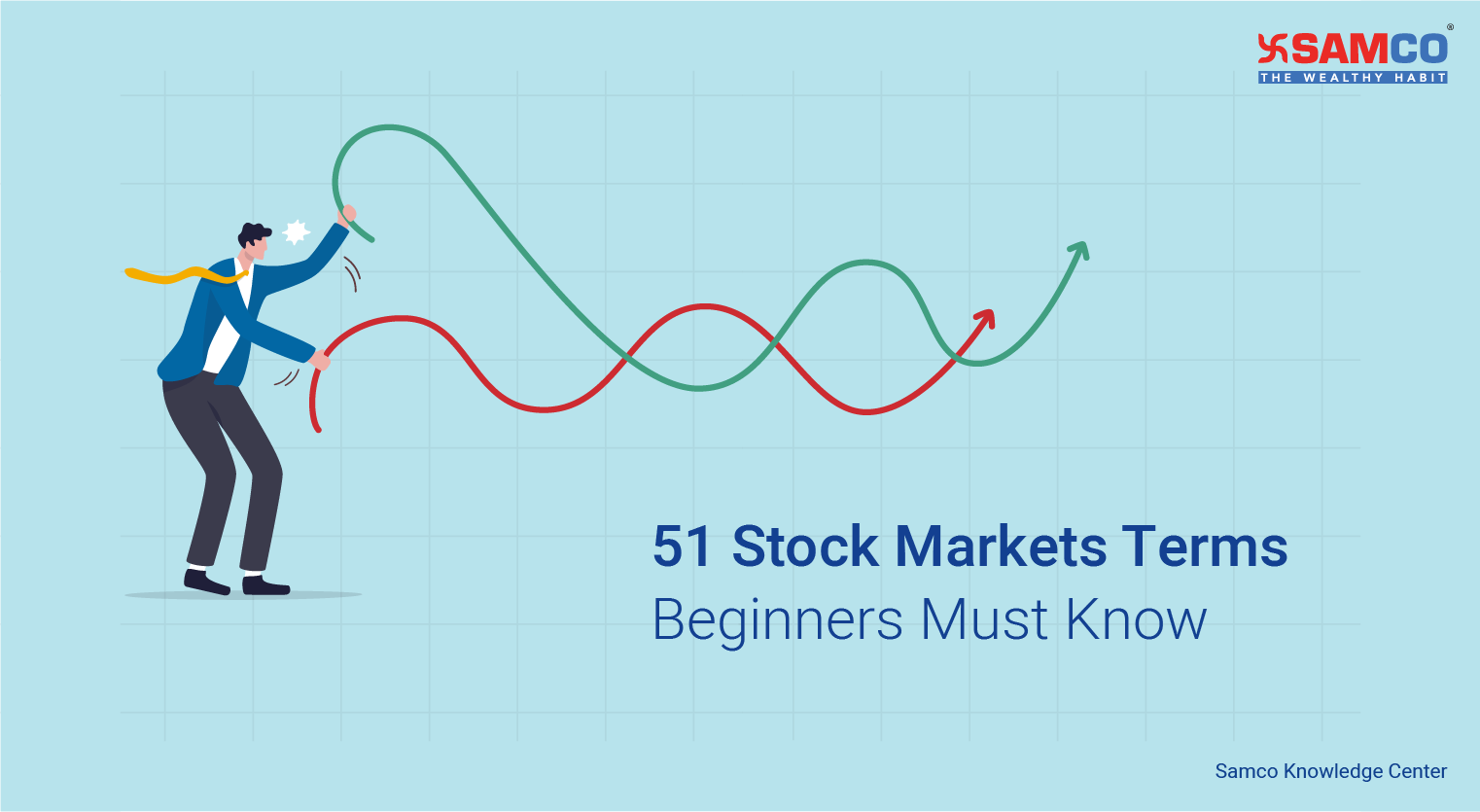 Do you wish to invest in the stock market but fail to understand it’s technicalities? Well, you don’t have to worry as today we have bought to you a glossary of fifty stock market terms. This will help you understand the mechanism of the stock market and establish a strong foundation before you dive deep into the pool of investing.
In this article, we have covered a detailed list of stock market terms from the extreme basic to the advanced level. So let us begin.
Do you wish to invest in the stock market but fail to understand it’s technicalities? Well, you don’t have to worry as today we have bought to you a glossary of fifty stock market terms. This will help you understand the mechanism of the stock market and establish a strong foundation before you dive deep into the pool of investing.
In this article, we have covered a detailed list of stock market terms from the extreme basic to the advanced level. So let us begin.
51 Stock Markets Terms Beginners Must Know
 Do you wish to invest in the stock market but fail to understand it’s technicalities? Well, you don’t have to worry as today we have bought to you a glossary of fifty stock market terms. This will help you understand the mechanism of the stock market and establish a strong foundation before you dive deep into the pool of investing.
In this article, we have covered a detailed list of stock market terms from the extreme basic to the advanced level. So let us begin.
Do you wish to invest in the stock market but fail to understand it’s technicalities? Well, you don’t have to worry as today we have bought to you a glossary of fifty stock market terms. This will help you understand the mechanism of the stock market and establish a strong foundation before you dive deep into the pool of investing.
In this article, we have covered a detailed list of stock market terms from the extreme basic to the advanced level. So let us begin.



 Easy & quick
Easy & quick
Leave A Comment?